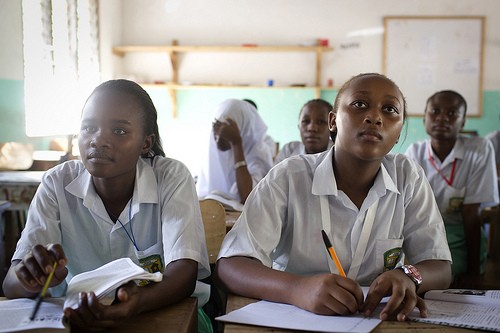Kenya
 More girls will have the resources that will allow them attend school through USAID’s education activities in Kenya. Investing equally in education for girls and boys is a key ingredient to Kenya’s success.
USAID Kenya
|
Kenya recognizes the importance of education. Investing equally in education for girls and boys promotes economic growth. Educated women marry later, have fewer children and seek better antenatal care. Their children live longer, healthier lives and are more likely to attend and succeed in school. These positive outcomes create a ripple effect throughout society.
Gender disparities are more pronounced in marginalized regions areas of Kenya. These areas include the Coast and North Eastern, as well as the informal urban settlements of the big cities and towns. Girls in these regions have the lowest student enrollment levels, and typically miss about 45 days of school each year – reducing their performance and chance of graduating.
Cultural norms and practices often lead parents to exclude girls from school. These practices include: female genital mutilation; beading; and early and forced marriage. Other factors include the ancillary costs of education, such as uniforms and books, will also favor sending boys to school over girls. The loss of the daughter’s contribution to livelihood activities, such as fetching water and gathering firewood can also drive families to limit a girl’s education.
USAID promotes equal access to quality basic education and learning opportunities. With this focus:
- More girls are able to attend and stay in school, from pre-school to university;
- Bright, but disadvantaged girls can escape poverty and empower the next generation;
- Teachers and educators learn how to improve the participation and performance of both boys and girls; and
- Policies and laws that promote gender equity in education are supported.
In 2013, USAID:
- Provided scholarships, career mentorship and skills training to over 2,000 young women;
- Trained close to 1,200 female educators, administrators and officials in various activities; and
- Reached over 4,600 female students with important messages about HIV/AIDS.
Related Areas
Gender Equality and Women’s Empowerment








Comment
Make a general inquiry or suggest an improvement.